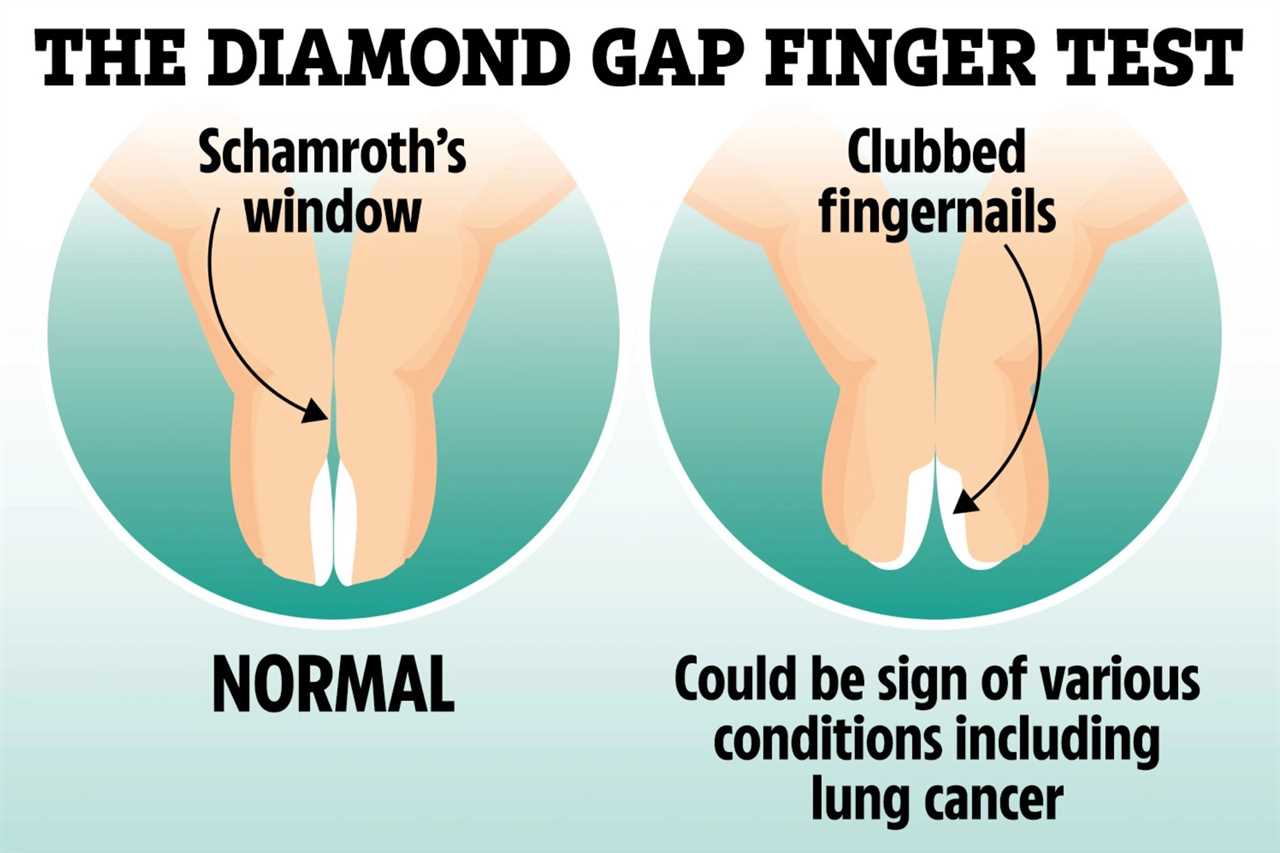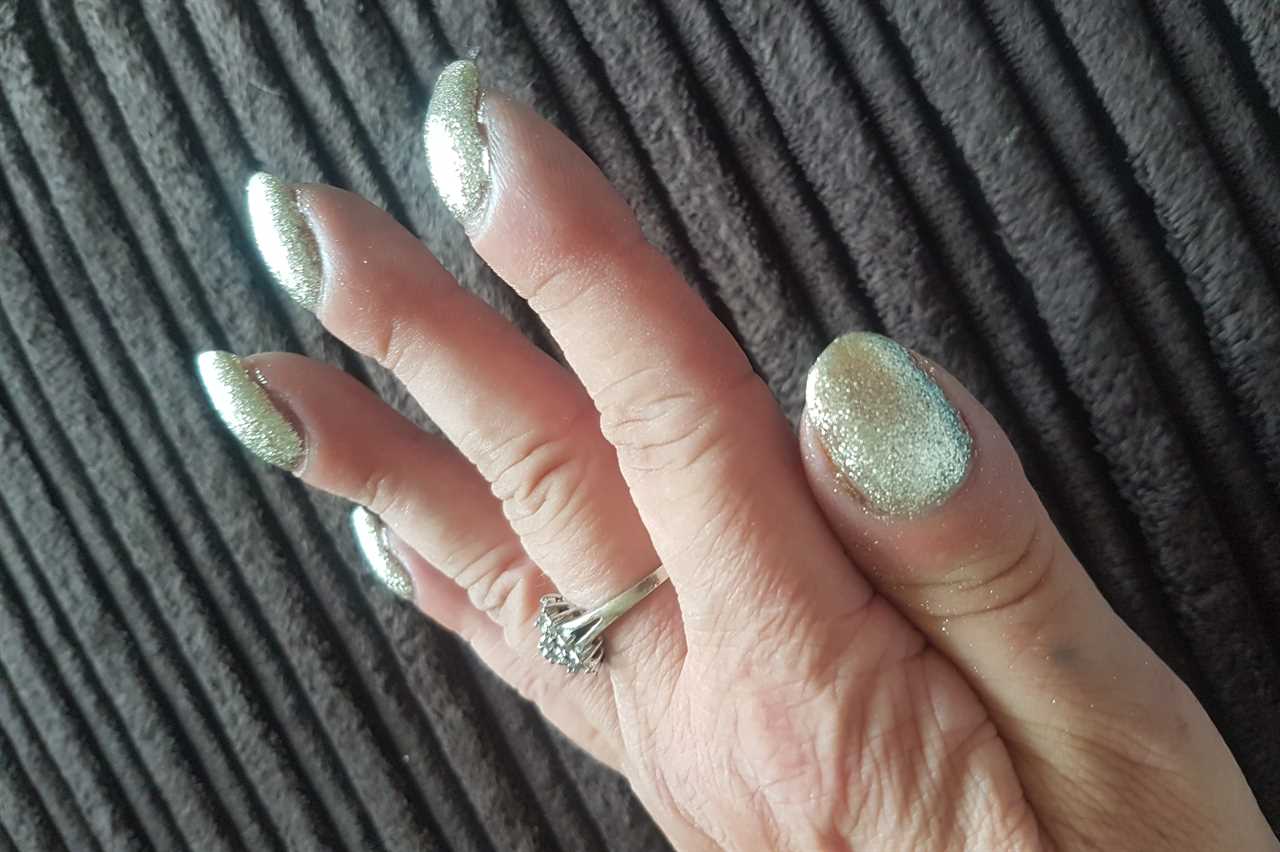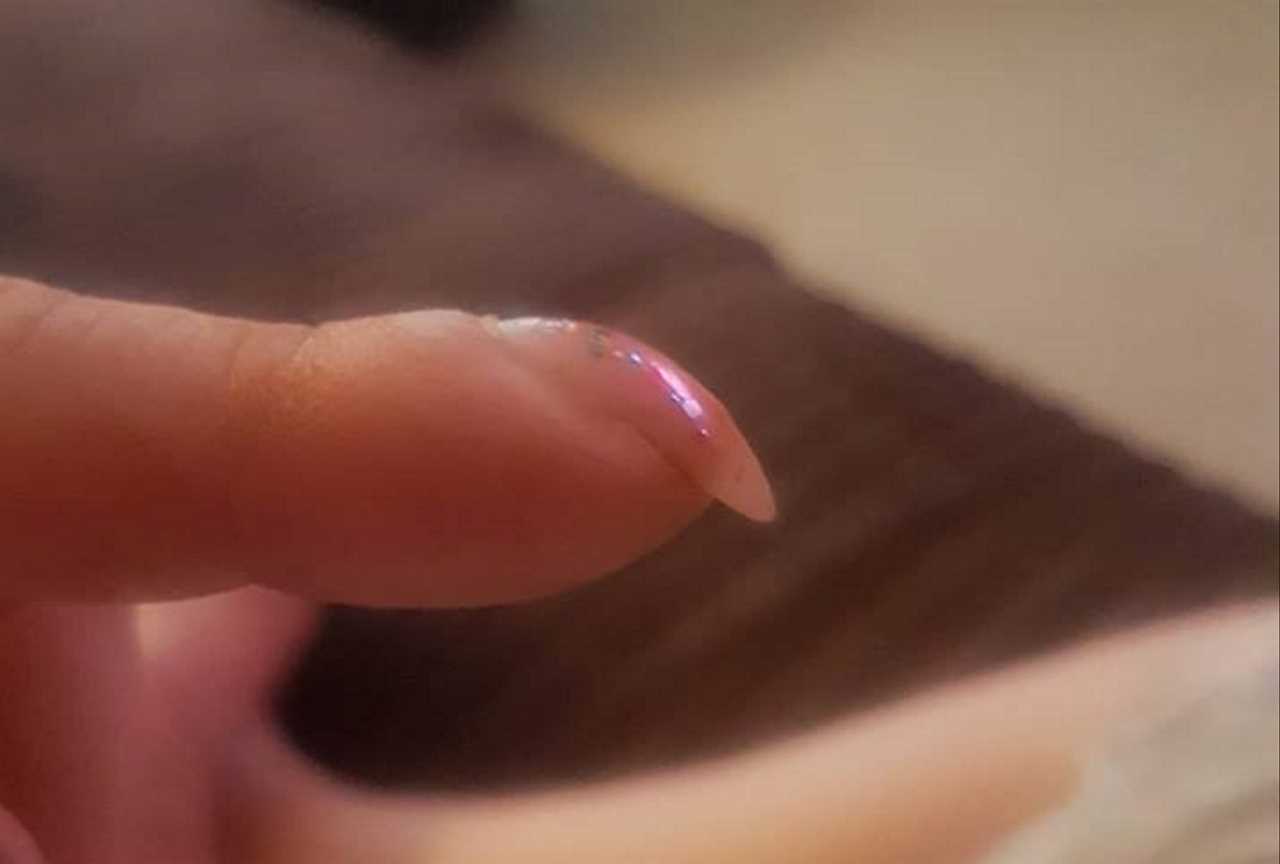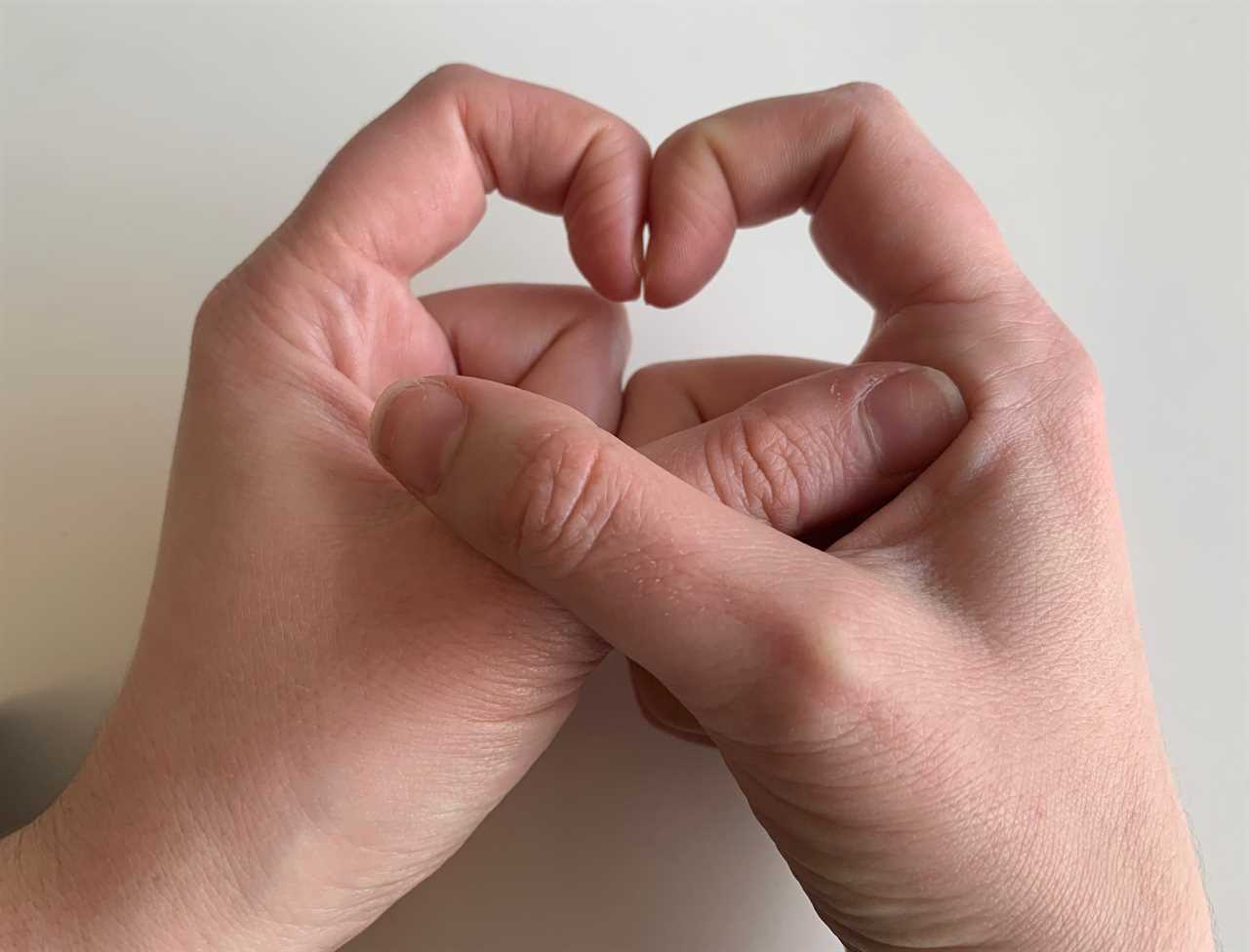YOU might think signs of lung cancer – one of the most common and serious types of the disease – would only show up in your breathing.
Though sufferers will experience symptoms like a persistent cough or breathlessness, these typically don’t appear until the cancer is in its later stages.

The ‘diamond gap’ fingernail test can indicate whether you have finger clubbing

Finger clubbing causes nails to curve more than usual – the change can happen gradually

They could be a sign of illness like lung cancer
But a less common sign of the disease can affect your fingers – and a simple test you can perform at home could reveal if you have lung cancer.
All you need to do is take the ‘diamond gap’ finger test, also known as the Schamroth window test.
This involves placing your nails together to see if there’s a diamond-shaped space between your cuticles. If there isn’t a space, this is a sign of what’s called finger clubbing, when the tips of your fingers become rounded and bulbous.
According to the Roy Castle Lung Cancer Foundation, about 35 per cent of people who have non-small cell lung cancer have finger clubbing and 4 per cent of those with small cell lung cancer.
Non-small cell is the most common form of the disease and makes up about 85 per cent of cases, NHS guidance said. Small cell is the less common variety which spreads faster.
Finger clubbing happens in stages and can take years to develop, according to Cancer Research UK. It usually affect the fingers on both your hands, but you might see it on your toes too.
Firstly, you might notice a softening at the base of your nails and some redness around it.
Next, the angle between the nail bed and the skin just beneath your cuticle increases, causing your nail to curve more than usual.
Your nail will develop ridges along the length of it and start looking shiny, as will the skin around it.
Then the edges of your fingers will start looking larger, giving a bulbous, ‘clubbed’ appearance.
While it’s unclear what exactly causes this, but experts think it could be due to cells called megakaryocytes – which are responsible for the production of blood platelets – getting stuck in the blood vessels in your finger tips, leading to tissue growth.
According to Cancer Research, finger clubbing can be an indicator for a number of health conditions involving the heart and lungs.
Aside from lung cancer, this quirk to the appearance of your fingers can also develop if you have mesothelioma – a type of cancer that affects the lining of some of your organs – some thyroid problems, ulcerative colitis and Crohn’s disease.
But it noted, not all people with these conditions will experience finger clubbing.
Here’s how to do the ‘diamond gap’ test
Firstly, put your hands up in front of you and touch the tips of both your index fingers against each other.
Then, make your nails touch by bending the tops of your fingers against each other.
If you can see a small diamond space between them (Schamroth’s window) then your nails are not clubbed.

Touch the nails of your index fingers together to do the ‘diamond gap’ test – a window between them indicated your fingers aren’t clubbed
It’s worth noting that finger clubbing doesn’t necessarily mean you definitely have lung cancer – and there are lots of reasons why your fingers may present this way.
But official guidance states: “Finger clubbing is unusual. If you think you might have it and are worried, do speak to your doctor.
“They can examine you and find out about any other symptoms you might have.
“They can send you for tests if necessary, such as a chest x-ray to check your lungs.”
Other lung cancer symptoms
Lung cancer doesn’t always cause symptoms in its early stages which is why sufferers might not know they have it until it’s spread through the lungs or other parts of the body.
Experts at Cancer Research UK said there are nine that are the most common in those diagnosed with the illness.
They are:
- having a cough most of the time
- having a change in a cough you have had for a long time – it may sound different or be painful when you cough
- getting out of breath doing the things you used to do without a problem
- coughing up phlegm (sputum) with blood in it
- having an ache or pain in the chest or shoulder
- chest infections that keep coming back or a chest infection that doesn’t get better
- losing your appetite
- feeling tired all the time (fatigue)
- losing weight
While it’s rare, the medics stated that some types of lung cancer cells produce hormones that go into the bloodstream.
They explained that these hormones can cause symptoms that don’t seem to be related to lung cancer.
Doctors call this paraneoplastic syndrome and the symptoms may include:
- pins and needles or numbness in the fingers or toes
- muscle weakness
- drowsiness, weakness, dizziness and confusion
- breast swelling in men
- blood clots.
The medics also warned that there is a very rare type of lung cancer that can grow right at the top of the lung, which is called a Pancoasr tumour.
Most people who have this type of cancer will suffer severe shoulder pain, or pain that travels down the arm.
If you’re worried about any of your symptoms, you should book an appointment with your GP.
In the event of an emergency, always call 999 or go to your nearest A&E department.






